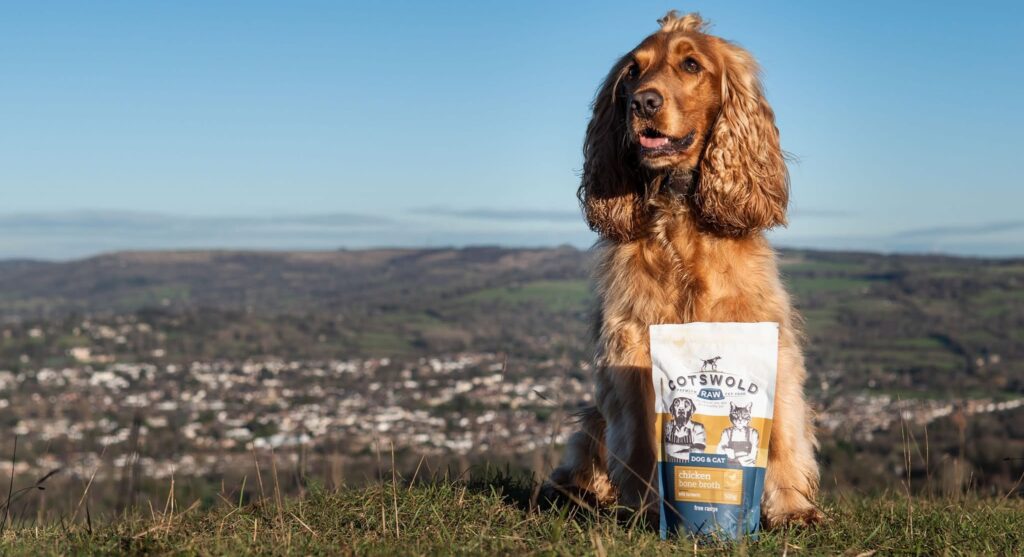As we step towards the warmer months, we are more inclined to venture around the great outdoors, this means beach trips, hikes, and travelling, all with our canine companions in tow. However much your dog usually drinks, warmer weather and increased activity means they’ll need to drink more. Allowing them to become dehydrated increases their risk of heat stroke. Some dogs are excellent drinkers; however, others can be a bit more stubborn. In fact, some dogs will drink from a muddy puddle but turn their noses up at a fresh bowl of clean water!
Water is arguably the most important nutrient, and signs of a deficiency will be apparent far sooner than with most deficiencies, which can slip under the radar for a long time. Water is vital for health, playing a key role in many bodily functions, including bringing nutrients to cells, lubricating joints, protecting organs, and maintaining body temperature. It is also a major constituent of blood. In fact, around 70% of a dog’s lean body weight is water. Ensuring adequate hydration is also key for the management of many conditions, such as such diabetes, kidney disease, and urinary tract stones.
Dogs are much better than cats at regulating their water intake, so should drink when thirsty, however it’s good to keep an eye on their drinking habits from time to time.
How Much Should My Dog Be Drinking?
Dogs should typically drink 40-60ml per kg of bodyweight a day. This may vary depending on diet, activity levels, and temperature. According to FEDIAF1, extremely active dogs may need up to 100ml per kg per day, or even as much as 150ml in temperatures >20°C. (Water content of the diet will affect how much is drank from the bowl).
The ‘Pinch Test’ can help determine your dog’s hydration status. Pinch together the loose skin on the back of the neck or between the shoulder blades for a few seconds. In a hydrated dog, the skin should quickly bounce back into place, but in a dehydrated dog, it may take a bit of time or remain in a wrinkled position, this is due to reduced skin elasticity.
| Signs of Dehydration in Dogs |
| Reduced Skin Elasticity |
| Sticky, Dry Gums |
| Low Energy/Weakness |
| Excessive Panting |
| Breathing Changes |
| Lower Urine Output |
Dietary Moisture
Naturally, dogs would obtain the bulk of their water from their meals. Dry food diets typically contain <10% moisture, whereas a raw or wet diet contains 60-80%, which closely aligns with the moisture content dogs would consume through prey. Dogs fed a high moisture diet will typically drink less than those on a dry diet, because their meals are better able to satisfy their water requirements.
Working and Active Dogs
Working dogs can sometimes face challenging climates and can exert themselves when completing their tasks. It is especially important to ensure adequate water intake in active and working dogs, who are more at risk of dehydration.
It is preferable to offer smaller drinks at frequent intervals when out with working and active dogs, rather than allowing them to gulp down excessive amounts of water after exercise, whilst they’re panting a lot. This is especially recommended in larger, and deep chested breeds, and allowing them to calm down and cool off before drinking ensures they don’t drink too much at once.
Cotswold RAW’s Tips For Staying Hydrated
Keep The Bowl Clean
We’d prefer not to drink out of a dirty glass, so it’s good practice to make sure your dog’s bowl is clean and free of dirt. Changing the water frequently keeps it fresh, especially in our more slobbery dogs!
Raised Bowl
Some dogs may struggle due to joint pain to reach their water bowls every time they wish to drink, in this case, a raised bowl may help support them.
Travel Bottle on Walks
These are great when you’re out walking with your dog, allowing you to offer small and frequent drinks to keep them quenched.
Bone Broth
Bone broth has a lot to offer. As a flavoured liquid, many dogs find it irresistible. A versatile addition to any complete and balanced diet, it can be offered as a cold refreshing treat or drizzled onto their dinner. Even adding a splash into their water can make it more appetising. In fact, it has been shown that working dogs offered a chicken-flavoured drink after exercise had greater hydration levels and drank significantly more than those offered water2. Thus, whilst water should make up the majority of what they drink, a splash of bone broth can go a long way in encouraging your dog to drink on those warmer days.

References
- FEDIAF ‘The importance of water in your pet’s diet.’ Available at: https://europeanpetfood.org/pet-food-facts/fact-sheets/nutrition/the-importance-of-water-in-your-pets-diet/
- Otto, C. M. et al. (2017) ‘Evaluation of Three Hydration Strategies in Detection Dogs Working in a Hot Environment,’ Frontiers in Veterinary Science, 4, 174. Available at: https://doi.org/10.3389/fvets.2017.00174
Lucy James, BSc (Hons) Bioveterinary Science
Looking to enhance your pet’s diet? Take a look at Cotswold RAW’s range of raw dog food and raw cat food, including raw meaty bones, dried treats, and puppy food.

